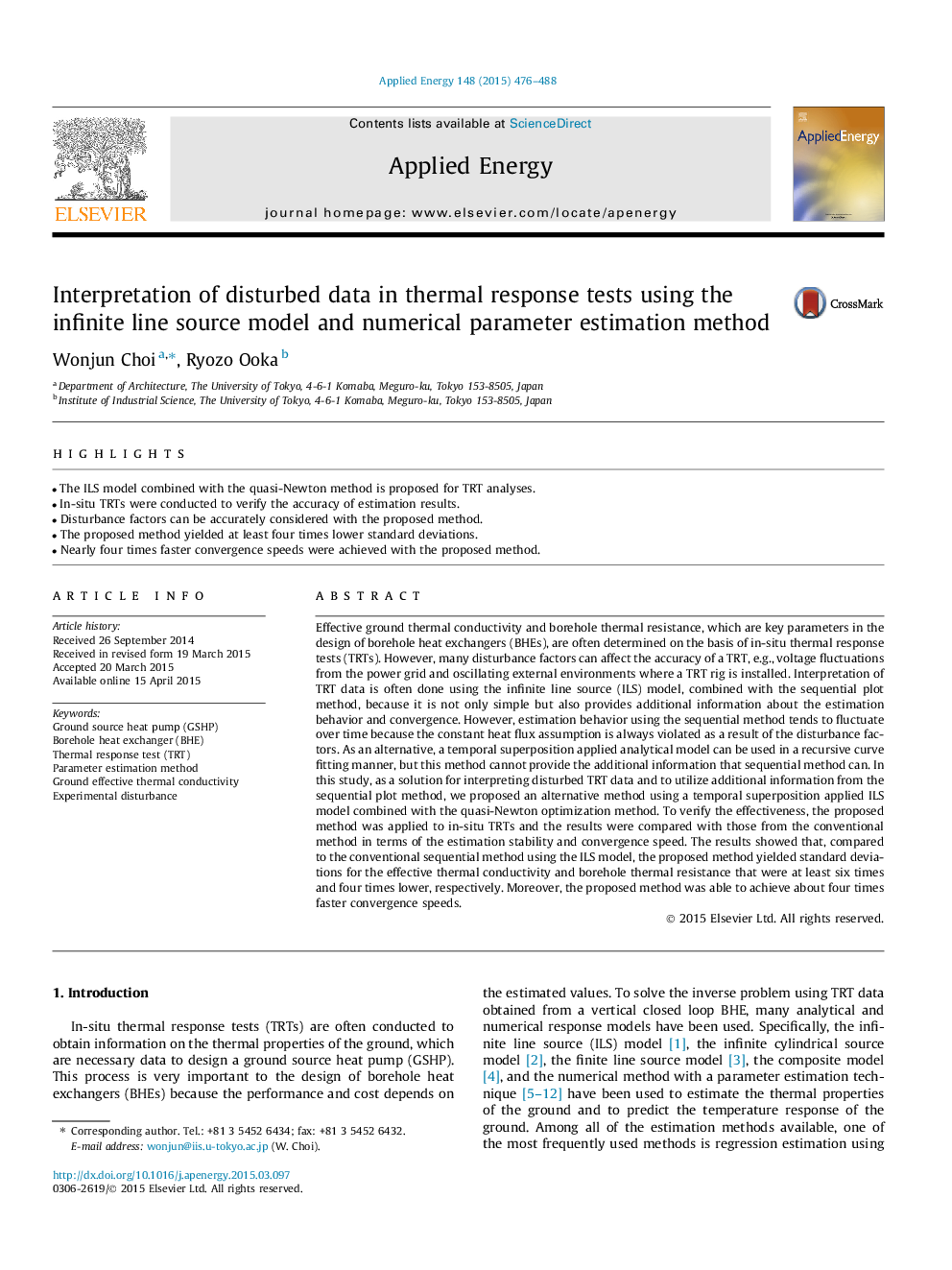| کد مقاله | کد نشریه | سال انتشار | مقاله انگلیسی | نسخه تمام متن |
|---|---|---|---|---|
| 6687344 | 501878 | 2015 | 13 صفحه PDF | دانلود رایگان |
عنوان انگلیسی مقاله ISI
Interpretation of disturbed data in thermal response tests using the infinite line source model and numerical parameter estimation method
ترجمه فارسی عنوان
تفسیر داده های مختلط در آزمون های پاسخ حرارتی با استفاده از مدل منبع نامحدود خط و روش برآورد پارامتر عددی
دانلود مقاله + سفارش ترجمه
دانلود مقاله ISI انگلیسی
رایگان برای ایرانیان
کلمات کلیدی
موضوعات مرتبط
مهندسی و علوم پایه
مهندسی انرژی
مهندسی انرژی و فناوری های برق
چکیده انگلیسی
Effective ground thermal conductivity and borehole thermal resistance, which are key parameters in the design of borehole heat exchangers (BHEs), are often determined on the basis of in-situ thermal response tests (TRTs). However, many disturbance factors can affect the accuracy of a TRT, e.g., voltage fluctuations from the power grid and oscillating external environments where a TRT rig is installed. Interpretation of TRT data is often done using the infinite line source (ILS) model, combined with the sequential plot method, because it is not only simple but also provides additional information about the estimation behavior and convergence. However, estimation behavior using the sequential method tends to fluctuate over time because the constant heat flux assumption is always violated as a result of the disturbance factors. As an alternative, a temporal superposition applied analytical model can be used in a recursive curve fitting manner, but this method cannot provide the additional information that sequential method can. In this study, as a solution for interpreting disturbed TRT data and to utilize additional information from the sequential plot method, we proposed an alternative method using a temporal superposition applied ILS model combined with the quasi-Newton optimization method. To verify the effectiveness, the proposed method was applied to in-situ TRTs and the results were compared with those from the conventional method in terms of the estimation stability and convergence speed. The results showed that, compared to the conventional sequential method using the ILS model, the proposed method yielded standard deviations for the effective thermal conductivity and borehole thermal resistance that were at least six times and four times lower, respectively. Moreover, the proposed method was able to achieve about four times faster convergence speeds.
ناشر
Database: Elsevier - ScienceDirect (ساینس دایرکت)
Journal: Applied Energy - Volume 148, 15 June 2015, Pages 476-488
Journal: Applied Energy - Volume 148, 15 June 2015, Pages 476-488
نویسندگان
Wonjun Choi, Ryozo Ooka,
